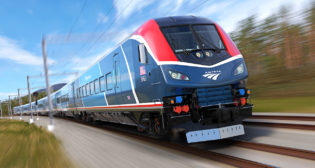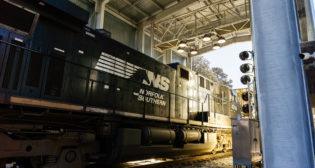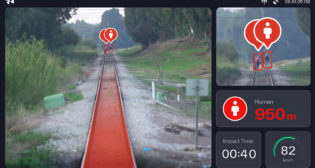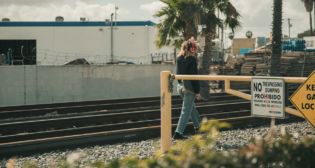
UPDATED DEC. 20: Overspeed cause of Amtrak Cascades fatal derailment
Written by Railway Age Staff
Three people were killed and more than 70 were injured as an Amtrak Cascades train derailed early Dec. 18 while traversing a curve leading into an overpass at Interstate 5 southwest of Tacoma, Wash., sending a locomotive and passenger cars crashing onto the highway below.
The National Transportation Safety Board, in preliminary findings based upon event recorder data, identified the cause of the wreck as an overspeed condition. NTSB also cited a lapse in situational awareness on the part of the engineer as a possible contributing factor, as there was a second person in the cab.
Southbound Amtrak Cascades no. 501, bound for Portland, Ore., from Seattle, Wash., was operating at 81 mph on a track segment with a civil speed restriction of 30 mph, according to event recorder data obtained from the trailing locomotive. The derailment came on the first day of Amtrak service via the new Port Defiance Bypass south of Tacoma. The lead locomotive, a Siemens Charger diesel-electric, also new to the service, and a P42 Genesis were providing push-pull power from opposite ends of the 12-car Talgo train. All of the passenger cars derailed, and five vehicles on the highway were hit by the train. There were five crew and one technician aboard the train, and 80 passengers. At least 50 people were hospitalized, more than a dozen with critical or serious injuries. No one on the highway was killed.
Positive Train Control had been installed on the right-of-way, but wasn’t operational, said Geoff Patrick, spokesman for Sound Transit, which owns the right-of-way. The target date for having PTC up and running for the segment of the track where the derailment occured is the second quarter of 2018. Locomotives and cab-control cars also need to be equipped with PTC. To date, Amtrak has equipped 49% of its locomotives and control cars, according to Federal Railroad Administration data from the second quarter of 2017.
The Bypass, the former BNSF Lakewood Subdivision now owned by Sound Transit, was rebuilt to route Amtrak Cascades and other long-distance trains around the former, slower route along Puget Sound on BNSF-owned tracks. The project includes a stop at the new Tacoma station at Freighthouse Square, and 20 passenger rail improvements administered by WSDOT and paid for with nearly $800 million in federal funds. It was to support two additional daily Amtrak Cascades roundtrips between Seattle and Portland, cut travel time between the cities by 10 minutes and improve on-time reliability by avoiding shared operations with freight trains.
A WSDOT track chart shows the maximum operating speed drops from 79 mph to 30 mph for passenger trains just before the tracks curve to cross Interstate 5. The chart, dated Feb. 7, 2017, was submitted to the FRA in anticipation of the start of passenger service on the Bypass.
A retired railroad official who worked on PTC offers the following observations:
“BNSF is not responsible for track construction and maintenance or signal installation and maintenance on the formerly BNSF-owned Lakewood Subdivision. Those functions have been assigned to contractors by the present owner, Sound Transit. BNSF does provide dispatching service. The dispatcher is the Seattle Subdivision dispatcher.
Video screen capture of derailed Charger locomotive in Amtrak 501 derailment.

Photos courtesy Pierce Ciounty Sheriff.








